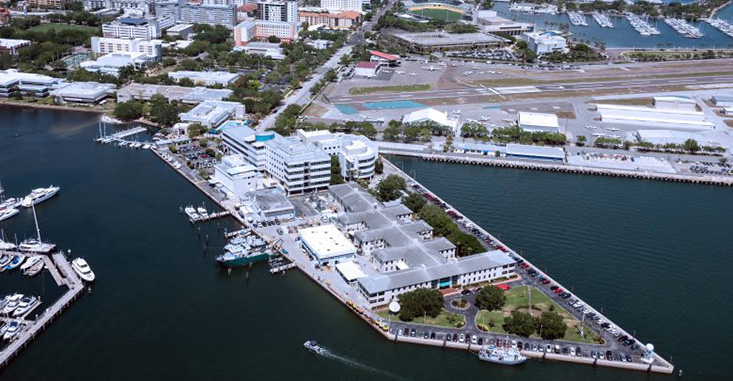
Marine Science Faculty Publications
Document Type
Article
Publication Date
6-15-1999
Digital Object Identifier (DOI)
https://doi.org/10.1029/1999JC900073
Abstract
The barotropic responses of the west Florida continental shelf to idealized upwelling favorable alongshore and offshore wind stresses are studied using the three-dimensional, time-dependent, primitive equation Princeton Ocean Model (POM). When forced with uniform winds, the shelf circulation evolves quickly to a quasi steady state. A southeastward alongshore wind lowers sea level along the coast and drives a southeastward coastal jet with a relatively weak northwestward return flow farther offshore. A southwestward offshore wind lowers sea level along the west Florida coast and raises sea level along the Panhandle coast. Two independent circulation gyres are set up in association with these regionally different sea level distributions: An anticyclonic gyre off the west Florida coast consisting of a southeastward coastal jet and a broad return flow over the middle shelf and a cyclonic gyre off the Panhandle coast consisting of a strong northwestward coastal jet and an adjacent narrow southeastward undercurrent. These gyres are separated by the Big Bend region. In both cases (alongshore and offshore wind forcing) the circulations are fully three-dimensional, with opposing surface and bottom boundary layer flows accounting for the across-shelf transports. The shapes of the coastline and the isobaths are important determinants of the shelf-wide responses. Several locally maximum upwelling regions are identified for geometrical reasons. These include the Panhandle coast south of Apalachicola Bay, the west Florida coast south of Tampa Bay, along the Florida Keys, and at the shelf break where topographic Rossby waves are evident.
Rights Information
Was this content written or created while at USF?
Yes
Citation / Publisher Attribution
Journal of Geophysical Research - Oceans, v. 104, issue C6, p. 13507-13527
Copyright 1999 by the American Geophysical Union.
Scholar Commons Citation
Li, Zhenjiang and Weisberg, Robert H., "West Florida Shelf Response to Upwelling Favorable Wind Forcing: Kinematics" (1999). Marine Science Faculty Publications. 122.
https://digitalcommons.usf.edu/msc_facpub/122

